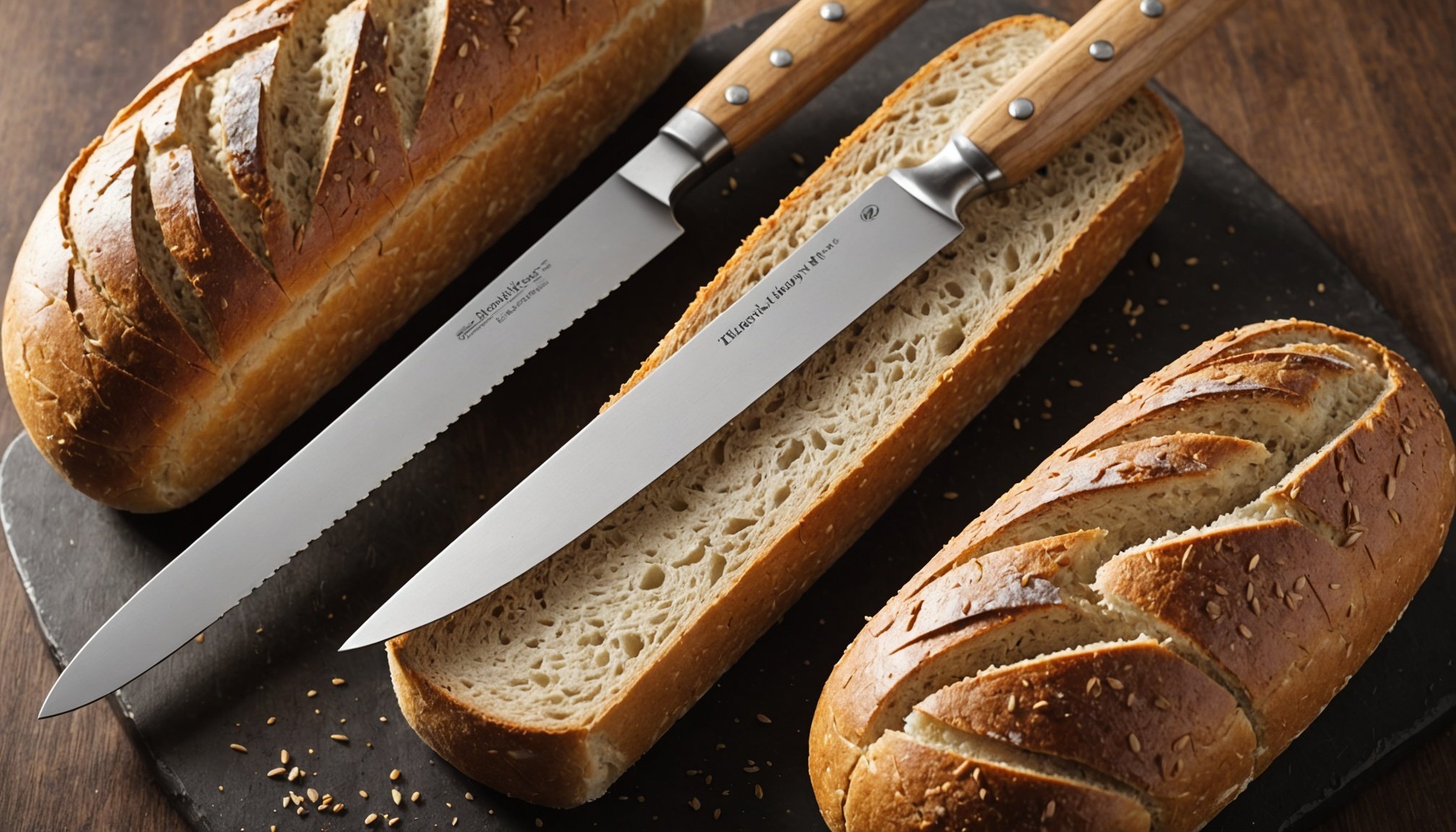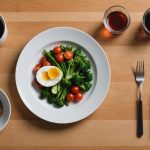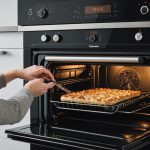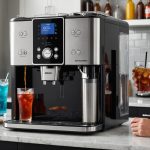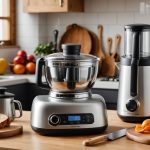Top Tips for Selecting the Ultimate Bread Knife for Perfect, Precision Slicing
When it comes to cutting bread, whether you’re a professional chef or a home baker, having the right bread knife can make all the difference. The wrong knife can lead to torn, uneven slices and a frustrating experience, while the right one can deliver clean, precise cuts every time. Here’s a comprehensive guide to help you choose the best bread knife for your needs.
Understanding Your Bread-Cutting Needs
Before diving into the specifics of bread knives, it’s crucial to understand the types of bread you typically cut. This will help you decide between the two main types of bread knives: serrated and straight-edged.
In parallel : The Definitive Resource for Selecting a Heat-Resistant, Warp-Proof, and Non-Melting Soup Ladle
Serrated vs Straight-Edged Bread Knives
-
Serrated Bread Knives: These knives are ideal for cutting through crusty artisan loaves like sourdough or baguettes. The serrations help to manage hard crusts without crushing the inside of the bread. However, they can struggle with softer, smoother-textured loaves, often tearing or shredding delicate breads like sandwich breads or brioche[1].
-
Example: The HexClad Damascus Steel 20cm Serrated Bread Knife is highly praised for its ability to slice through sourdough with ease, thanks to its 67 layers of Japanese steel[2].
Topic to read : Revamp Your Kitchen: The Ultimate Drawer Organizer for Effortless Bulky Utensil Storage!
-
Straight-Edged Bread Knives: These knives feature a smooth, non-toothed cutting edge and are perfect for cutting soft, tender breads like sandwich loaves, rolls, and pastries. They produce clean, even slices without tearing the crumb and are also versatile for cutting cakes and pies.
-
Example: The Victorinox Swiss Modern Bread and Pastry Knife is a great option for beginners, with its sleek, minimalist design and lightweight, flexible blade that slices through crusty loaves without resistance[2].
Key Factors to Consider When Choosing a Bread Knife
Selecting the right bread knife involves several key considerations to ensure you get the best tool for your kitchen.
Blade Length
- The length of the blade is critical. Bread knives typically range from 8 to 10 inches in length. Longer blades are better suited for large, wide loaves, allowing you to cut through in a single stroke. Shorter blades are more maneuverable for smaller, narrower breads.
- Example: For larger artisanal breads, a 9-inch or 10-inch blade like the Wusthof Classic Ikon Black 9″ Double Serrated Bread Knife would be ideal[4].
Blade Material
- The material of the blade affects its durability and maintenance. High-carbon stainless steel is a common choice due to its durability and resistance to rust. Carbon steel blades can hold a very sharp edge but may require more maintenance to prevent rust and discoloration.
- Quote: “High quality knives are expensive which is why we want to make sure you get a set you love. However, a good set can also last you a lifetime, so buying something nicer now can easily save you money down the line”[3].
Handle Design
- An ergonomic handle is essential for comfort and control. Look for handles made of materials like wood, plastic, or textured metal that provide a secure grip.
- Example: The HexClad Damascus Steel 20cm Serrated Bread Knife features a handle made from Pakkawood, which provides a comfortable and unique look[2].
Serration Size
- For serrated knives, the size and spacing of the serrations impact performance. Finer, more numerous serrations are better for delicate breads, while larger, widely-spaced teeth are suited for dense crusts.
- Tip: “Look for fewer, wider, and deeper serrations. These features help the blade slice through food smoothly and with ease”[5].
How to Choose the Right Bread Knife
Choosing the right bread knife is about matching your needs with the right features.
Match Your Bread Type
- If you regularly cut crusty artisan loaves, a serrated knife is likely your best bet. For softer breads, pastries, or cakes, a straight-edged knife will produce cleaner slices.
- Example: If you’re a sourdough aficionado, the Opinel N°116 Bread Knife Parallèle, with its curved blade and stainless steel construction, is a great choice for handling crusty loaves[2].
Consider the Blade Length
- Match the loaf size to the blade length. Larger loaves require longer blades for even, smooth slices. Smaller loaves or rolls can be handled with shorter blades.
- Tip: “Generally, longer blades (8-10 inches) are well-suited for larger artisanal bread, while shorter knives (6-8 inches) may be more maneuverable for smaller sandwich loaves or rolls”[1].
Handle Comfort
- Select a knife with a handle that feels comfortable and secure in your hand. An ergonomic design can enhance your cutting efficiency and enjoyment.
- Example: The ProCook Damascus 67 Bread Knife features a rounded handle that is comfortable to hold, making it easier to slice through tough parts of the loaf[2].
Maintenance Preferences
- If you prefer low-maintenance tools, opt for a stainless steel knife. If you’re willing to invest time in upkeep for a sharper edge, carbon steel could be a good choice.
- Quote: “Sharpening your knives can be really easy, but if that sounds like more than you want to take on, perhaps a set with a self-sharpening block is right for you”[3].
Best Bread Knives on the Market
Here are some top-rated bread knives that excel in various categories:
Best Overall Bread Knife
- HexClad Damascus Steel 20cm Serrated Bread Knife: Known for its attractive green handle and forged from 67 layers of Japanese steel, this knife is highly praised for its performance on sourdough and other crusty breads[2].
Best European-Style Bread Knife
- Opinel N°116 Bread Knife Parallèle: Made in France, this knife features a beechwood handle and a curved stainless steel blade. It’s elegant and performs well on crusty loaves, though it may require a bit more effort at the base of the loaf[2].
Best Affordable Bread Knife
- Sebatier by Stellar Bread Knife: This affordable option offers great value for its price. It’s lightweight and easy to use, making it a good choice for those on a budget[2].
Practical Tips for Using and Maintaining Your Bread Knife
To get the most out of your bread knife, here are some practical tips:
Sharpening Your Bread Knife
- It’s a good idea to sharpen your bread knife at least once a year or whenever you notice the blade beginning to dull.
- Tip: “Sharpening your knives can be really easy, but if that sounds like more than you want to take on, perhaps a set with a self-sharpening block is right for you”[3].
Storing Your Bread Knife
- Store your bread knife in a dry place to prevent rust. A knife block or magnetic strip can keep your knife organized and within reach.
- Example: Many sets, like the ProCook Damascus 67 Bread Knife set, come with a storage block and other knife care essentials[2].
Cutting Techniques
- Use a gentle sawing motion for serrated knives and a smooth, even stroke for straight-edged knives.
- Tip: “For cutting soft, tender bread like sandwich loaves, rolls, and brioche, use a straight-edged knife to produce clean, even slices without tearing the crumb”[1].
Comparison Table: Top Bread Knives
Here’s a comparison table to help you visualize the key features of some top-rated bread knives:
| Knife | Type | Blade Length | Material | Handle | Price |
|---|---|---|---|---|---|
| HexClad Damascus Steel 20cm Serrated Bread Knife | Serrated | 20cm (8 inches) | Japanese Steel | Pakkawood | £99 |
| Opinel N°116 Bread Knife Parallèle | Serrated | 20cm (8 inches) | Stainless Steel | Beechwood | £36.50 |
| Sebatier by Stellar Bread Knife | Serrated | 20cm (8 inches) | Stainless Steel | Plastic | £17.40 |
| Victorinox Swiss Modern Bread and Pastry Knife | Straight-Edged | 20cm (8 inches) | Stainless Steel | Fibro Pro | £47 |
| ProCook Damascus 67 Bread Knife | Serrated | 20cm (8 inches) | Japanese Damascus Steel | Rounded Handle | £109 |
FAQs
Here are some frequently asked questions about bread knives to help you make an informed decision:
What is the ideal length for a bread knife?
- Generally, longer blades (8-10 inches) are well-suited for larger artisanal bread, while shorter knives (6-8 inches) may be more maneuverable for smaller sandwich loaves or rolls[1].
Can I use a serrated knife to slice softer breads?
- While serrated knives are generally better suited for slicing through tough, crusty breads, you can use them on softer bread types. However, a straight-edge knife will produce cleaner, more even slices on delicate breads[1].
How often should I sharpen my bread knife?
- It’s a good idea to sharpen your bread knife at least once a year or whenever you notice the blade beginning to dull[1].
Choosing the right bread knife is not just about picking any knife; it’s about selecting a tool that complements your baking and cutting habits. By understanding the differences between serrated and straight-edged knives, considering factors like blade length and material, and choosing a comfortable handle, you can ensure that every slice of bread is cut with precision and ease.
Whether you’re a professional chef or a home baker, investing in a high-quality bread knife is a decision that will enhance your kitchen experience. Remember, the best knife is one that you will use frequently and maintain properly, ensuring it remains sharp and ready for every cutting task.
Detailed Bullet Point List: Key Considerations for Buying a Bread Knife
- Blade Type:
- Serrated for crusty breads
- Straight-edged for soft breads and pastries
- Blade Length:
- 8-10 inches for larger loaves
- 6-8 inches for smaller loaves
- Blade Material:
- High-carbon stainless steel for durability
- Carbon steel for a sharper edge but higher maintenance
- Handle Design:
- Ergonomic for comfort and control
- Materials like wood, plastic, or textured metal
- Serration Size:
- Finer serrations for delicate breads
- Larger serrations for dense crusts
- Maintenance Preferences:
- Stainless steel for low maintenance
- Carbon steel for those willing to invest in upkeep
- Balance and Weight:
- Test the knife’s balance and weight before purchasing
- A well-balanced knife feels natural in the hand and makes slicing easier
- Brand and Quality:
- Look for high-quality brands known for their performance and durability
- Consider the warranty and customer reviews
By carefully considering these factors, you can find the perfect bread knife that meets your specific needs and enhances your kitchen experience.

